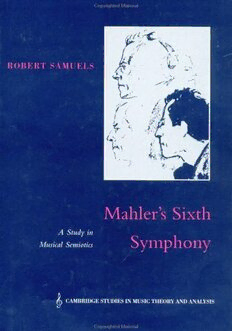
Mahler's Sixth Symphony: A Study in Musical Semiotics PDF
191 Pages·1996·8.386 MB·English
Most books are stored in the elastic cloud where traffic is expensive. For this reason, we have a limit on daily download.
Preview Mahler's Sixth Symphony: A Study in Musical Semiotics
Description:
The terms of structuralist and post-structuralist theory have been widely debated within the field of music analysis in recent years. However, very few analyses have attempted to address the repertoire of large orchestral works of the turn of the century - works which seem most obviously to escape the categories of conventional analysis. This study uses a semiotic theory of signification in order to investigate different types of musical communication. Musical meaning is defined on several levels from structures immanent to the work, through questions of tradition and genre, to consideration of the symphony as a narrative alongside other contemporary non-musical texts. Ideas from Eco, Barthes, and Derrida are deployed within the context of close analysis of the score in order to unite specifically analytical insights with cultural hermeneutics.
See more
The list of books you might like
Most books are stored in the elastic cloud where traffic is expensive. For this reason, we have a limit on daily download.
